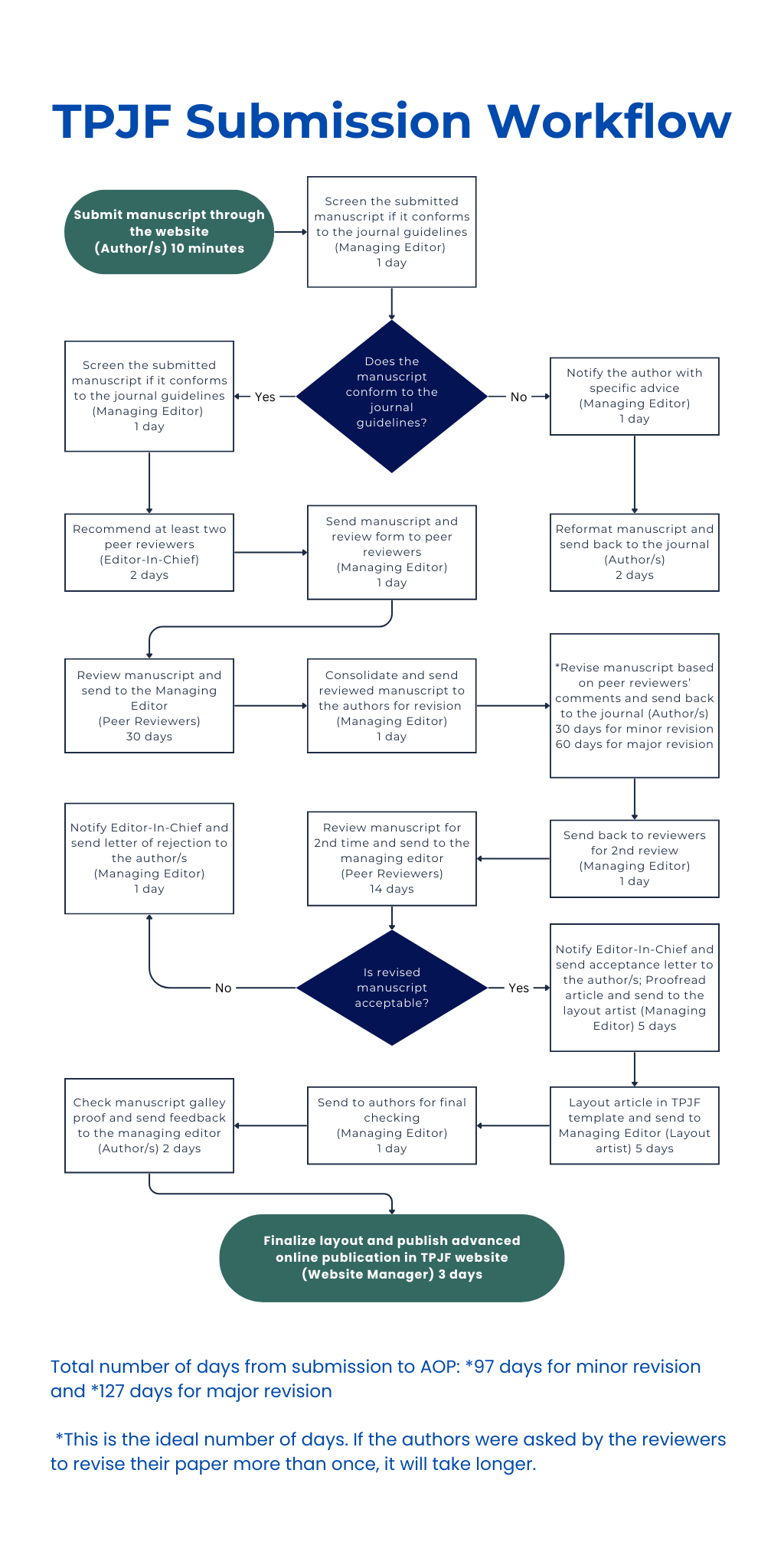All manuscripts submitted to the journal will undergo a preliminary evaluation by the Editor-in-Chief to determine the suitability of the submission based on the aims, scope, and adherence to the journal format.
Upon passing the preliminary evaluation, the manuscript will then go to the Managing Editor to manage the peer-review process. The manuscript will undergo a double-blind peer review by at least two independent experts in the particular field, wherein the identity of the author(s) is unknown to the reviewers and vice versa. The reviewers will evaluate the manuscript based on the relevance of the topic, timeliness, and technical quality.
All article types (research article, review article, short communication, commentary, policy brief) will undergo a double-blind peer review process.
Peer reviewers are given one month to submit their evaluations to us. On the other hand, authors are given 30 days for minor revision and 60 days for major revision.
In the case where the two reviewers have contradicting evaluations, a third reviewer will be consulted, after which the final decision is made by the editor-in-chief.
The reviewers are prohibited to show the manuscript under review to another person nor use the information contained therein. To ensure unbiased review, manuscripts submitted by BFAR and NFRDI researchers and other members of the editorial board shall be reviewed by experts from outside their respective institutions.
